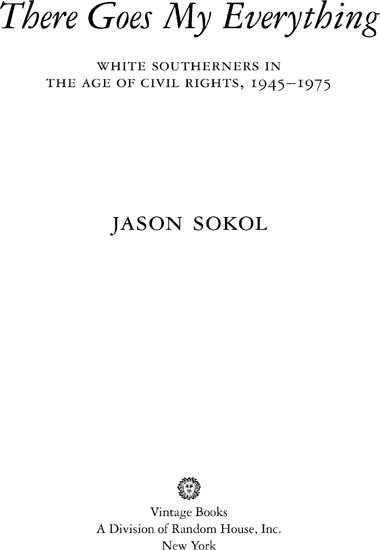Introduction: Change Seeps In
LIFE EMBRACED MYTH in the Jim Crow South, as facade blurred with fact. Hugh Wilson came up in that world, where icy stereotypes were as much a part of everyday life as hot soul food. Since I was three or four years old Id go down to my grandmothers, black-eyed peas and turnip greens, hog gravy, Lord have mercy. I mean just good old southern country. In his childhood, Wilson absorbed as many cruel myths as colossal meals. I was just like everybody else. Too many of us thought that, we knew individual blacks to be awful fine folks but we thought of blacks as a race as being sort of an Amos and Andy situation. Wilson started farming near Chapel Hill, North Carolina, in the 1930s. Jim Crow had defined the minds and lives of southerners, and Wilson bought in to the common image of African-Americans as inferior and content. These people have felt undisturbed by the Negro race, they were in their place. You had the black fellow as a happy fellow, he sings all day and he dont worry about where his food is coming from tomorrow. Many white southerners, like Wilson, persisted in those views. It was how they were raised, and many believed, how they would die.
When the civil rights movement tore through the southern landscape in the 1950s and 1960s, it challenged the attitudes of millions, undermined their customs, and upended their ways of life. It even penetrated the minds of old farmers like Wilson. I began to get a lot older before I began to realize. He attributed fundamental changes in his racial beliefs to the civil rights movement. Honest to God when I was a kid, I believed that junk, Wilson recalled in 1974. I changed an awful lot of my attitude toward matters of race. Wilson did not count his experience as unique; he glimpsed similar changes in many of his neighbors. These farmers around here and their wives, not all of them but by and large, they have come a long damn way. As the civil rights movement reshaped the South, it snapped the thin thread that had connected
THE CIVIL RIGHTS MOVEMENT possessed a rare ability to transform all it touched. In its hands, oppressed African-Americans gained legal equality, old white farmers like Hugh Wilson eventually rethought unquestioned beliefs, black power challenged white rule, and in the case of the Albany Herald, sarcasm turned into prophecy. Albany calmly today awaited to be turned upside down by Martin Luther King Jr., read the Southwest Georgia newspapers front page on July 17, 1962. While the Herald mocked Kings claim that the movement would turn Albany upside down, it gave unwitting expression to a fate that would soon visit thousands of communities across the South. When African-Americans struggled for civil rights, they also struck at the very foundations of southern life. The civil rights movement altered race relations, overturned ingrained practices, subverted traditions, ushered in political change, transformed institutions, undermined a way of life, and even turned cities upside downfrom Black Belt towns like Albany, Georgia, and Eutaw, Alabama, to metropolises such as Atlanta and New Orleans, and college communities like Athens, Georgia, and Chapel Hill, North Carolina. Many whites felt these changes just as deeply as, if much differently than, African-Americans. The impact of the civil rights movement differed from person to person, family to family, town to town. In the end, few escaped its long reach. Some white southerners attested to liberating experiences that forever altered their racial attitudes and behavior. Others found new ways to resist racial equality. Many more clung to any sense of normalcy they could salvage, at times willfully ignorant of the tumult around them. Still, change seeped into lifein ways whites had barely conceived and scarcely contemplated.
Most white southerners identified neither with the civil rights movement nor with its violent resisters. They were fearful, silent, and often inert. The age of civil rights looked different through their eyes. The prominent events of the erathe 1955 Montgomery bus boycott, the 1960 student sit-ins, the Birmingham church bombing in 1963, the Selma-to-Montgomery march of 1965, for exampleoften had less meaning than the changes in the texture of day-to-day life. Few white southerners ever forgot the day they first addressed a black person as Mr. or Mrs.; the time their maid showed up for work, suddenly shorn of her old deference; the day they dined in the same establishments as black people; the process by which their workplaces became integrated; the autumn a black man appeared on the ballot; or the morning white children attended school with black pupils. Taken together, these changes amounted to a revolution in a way of life.





